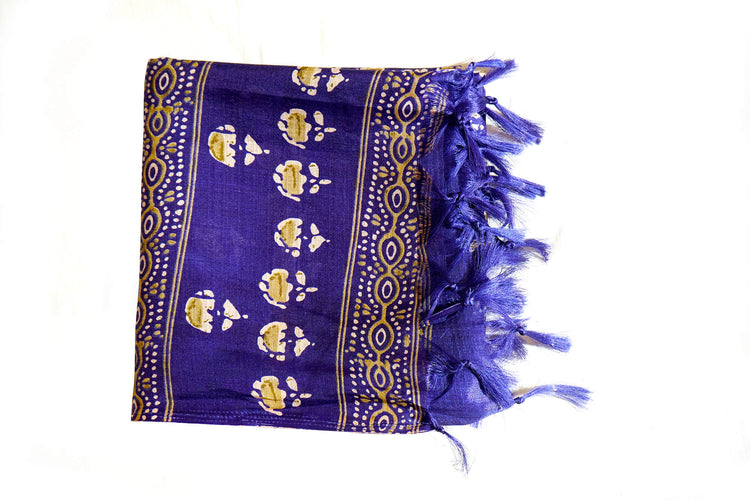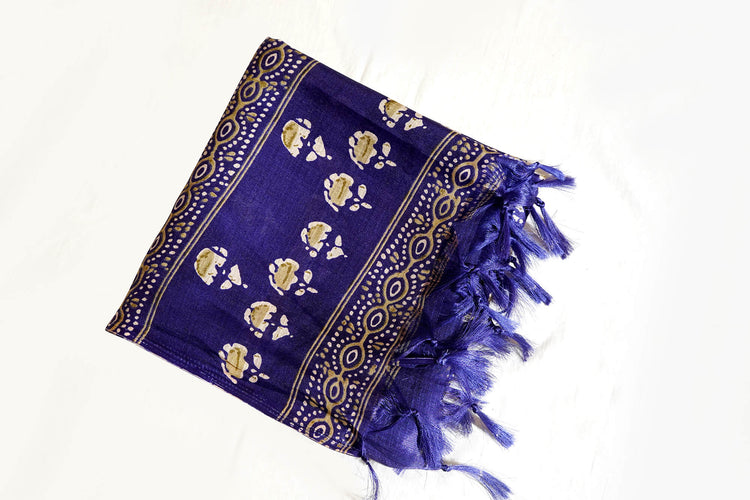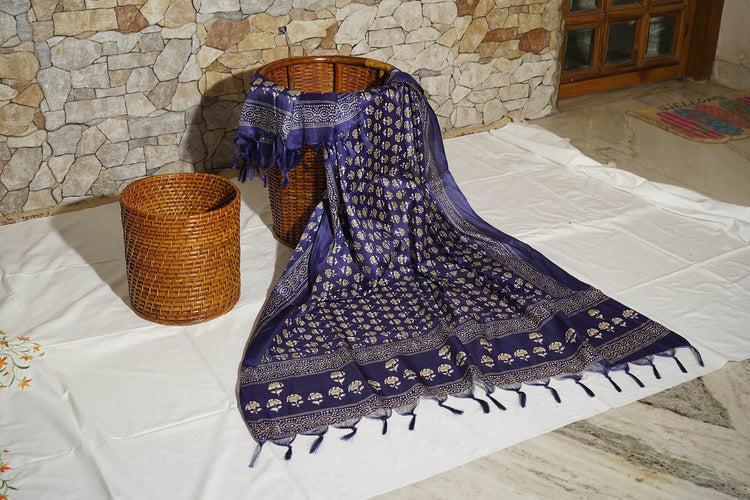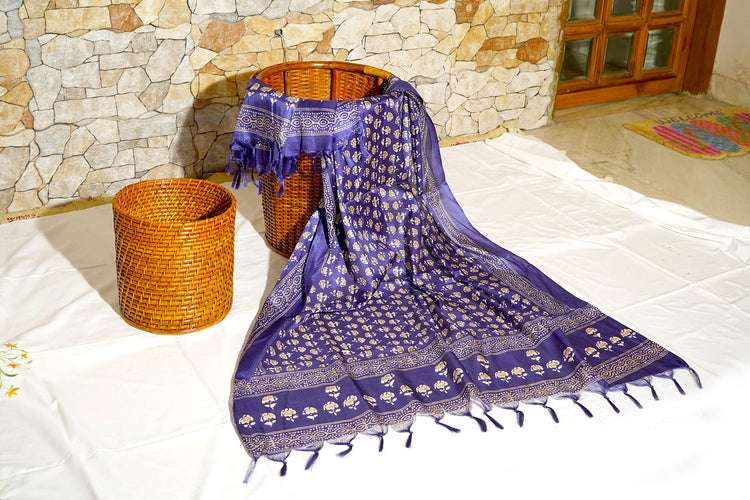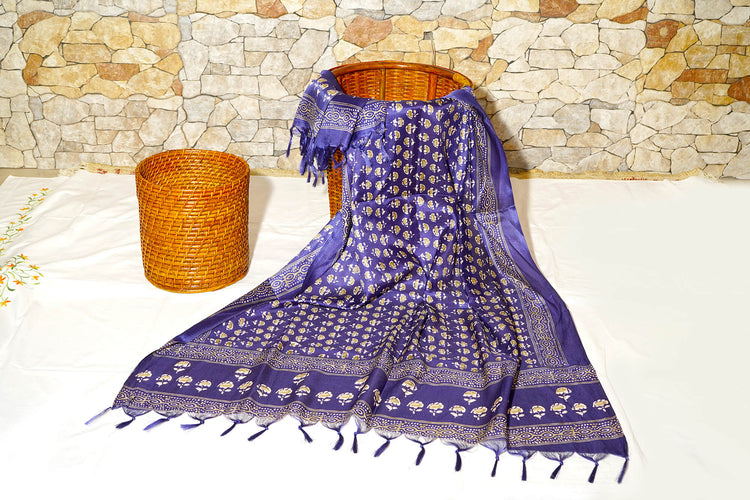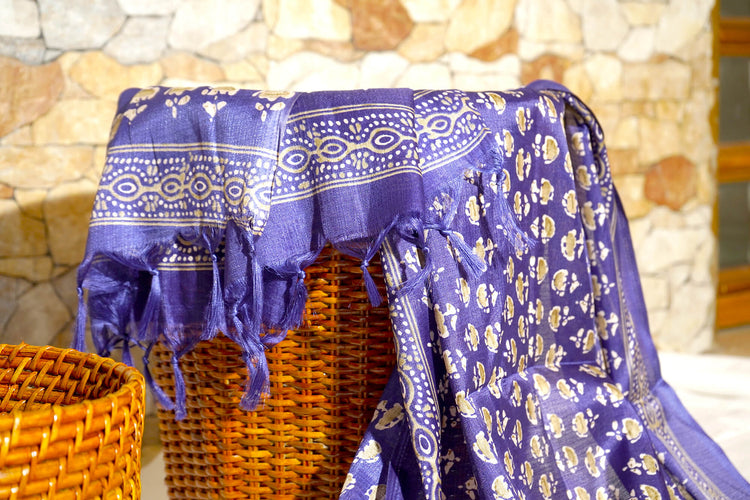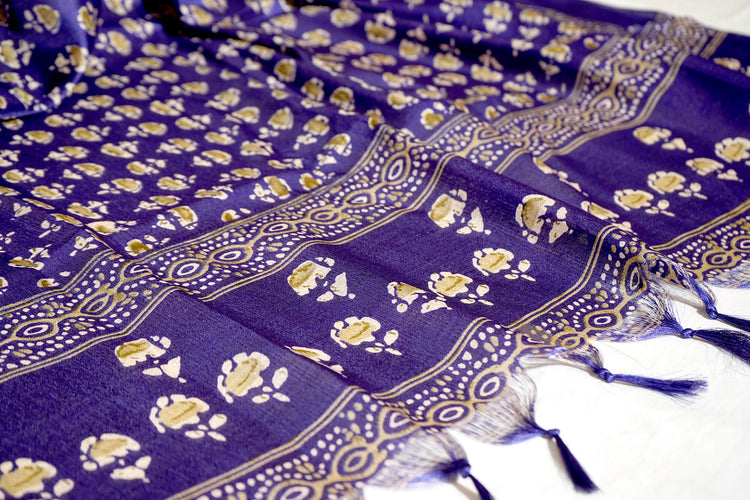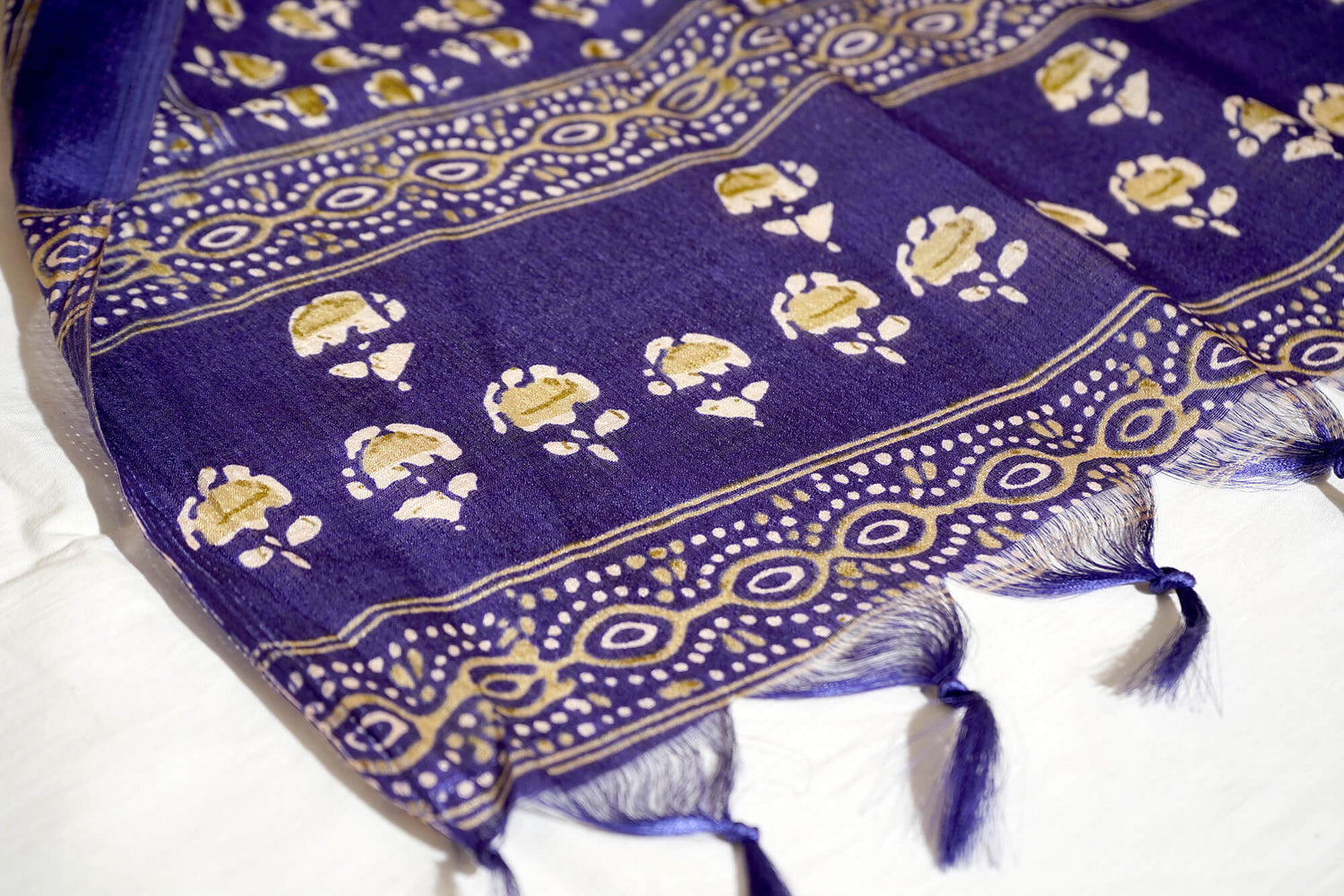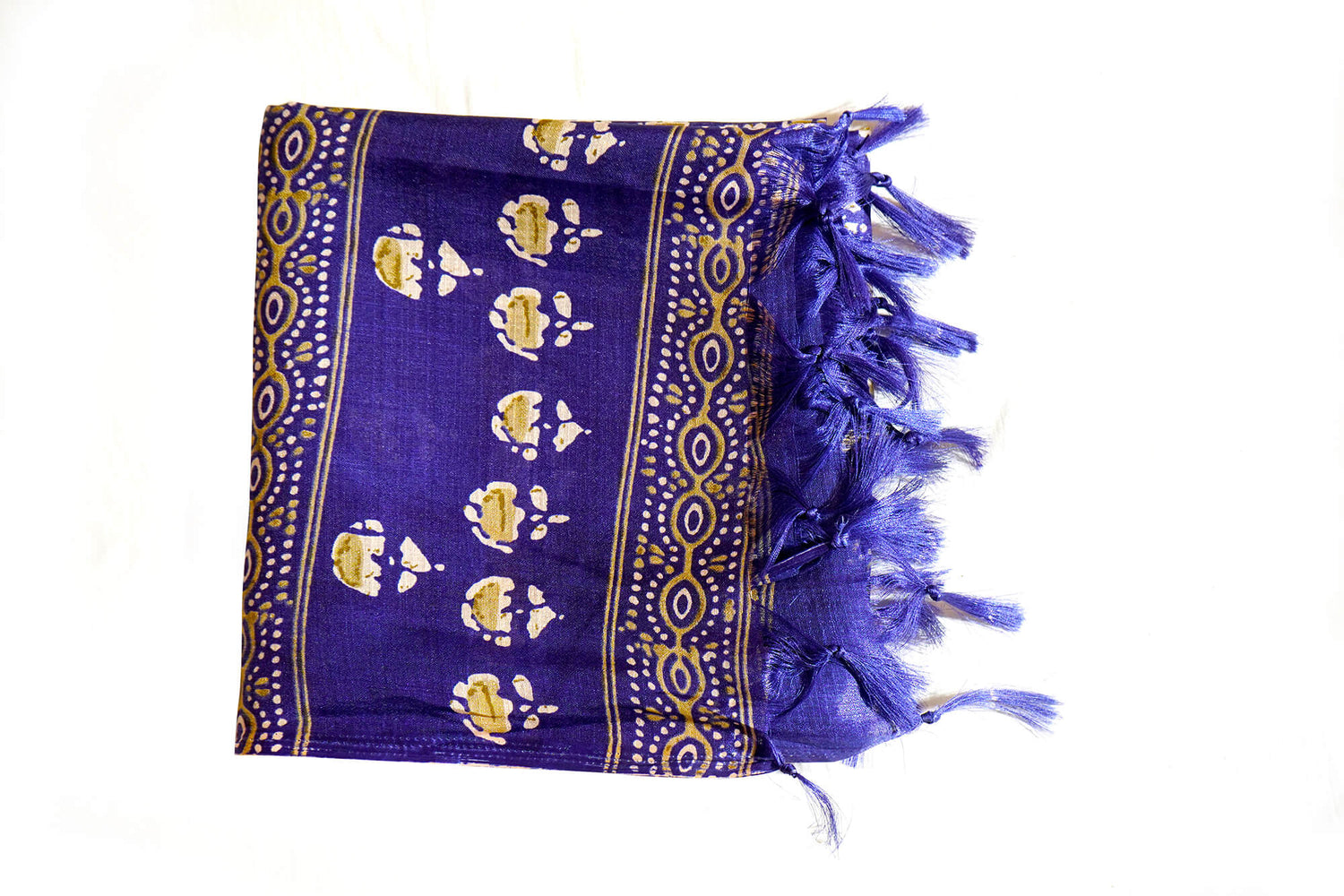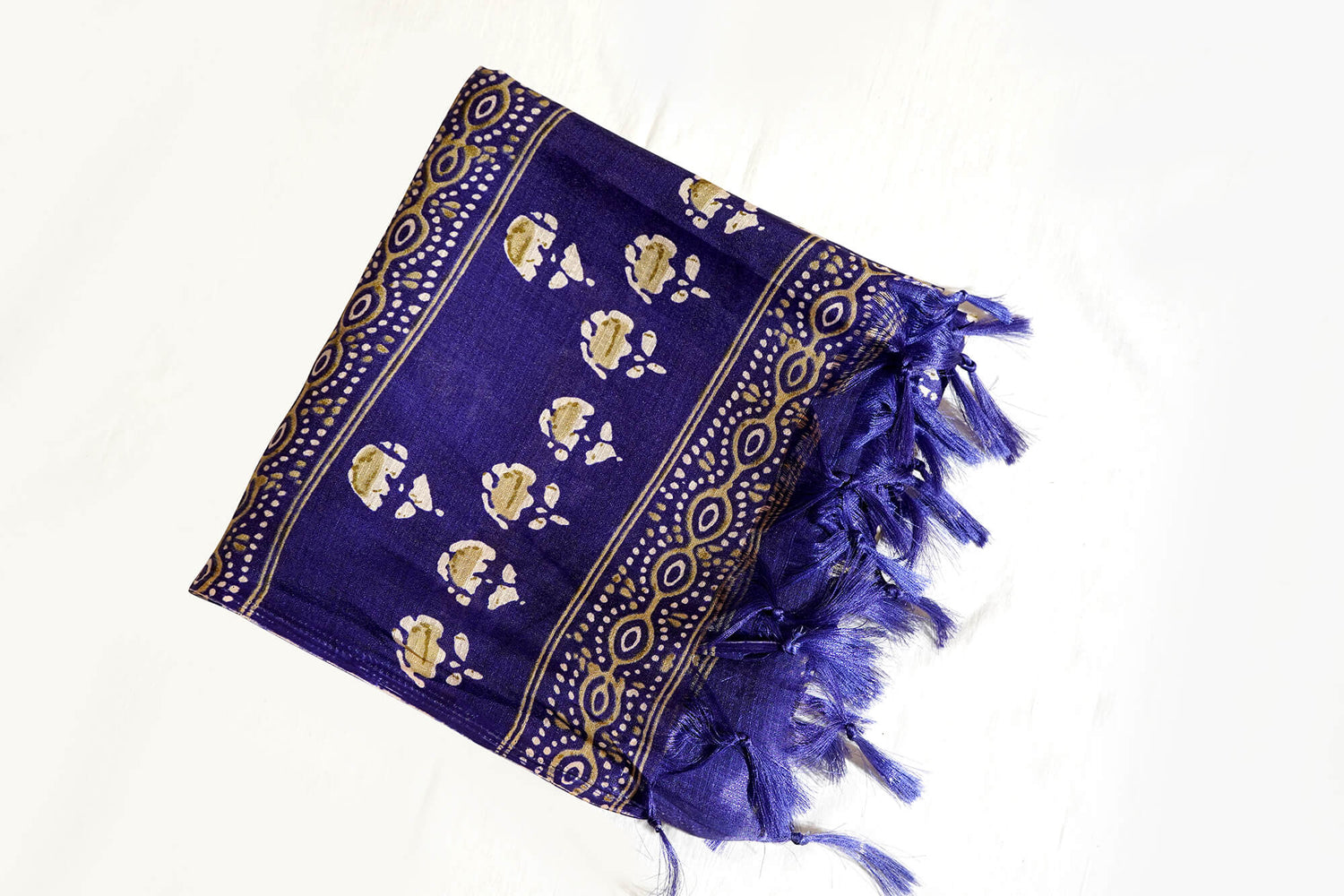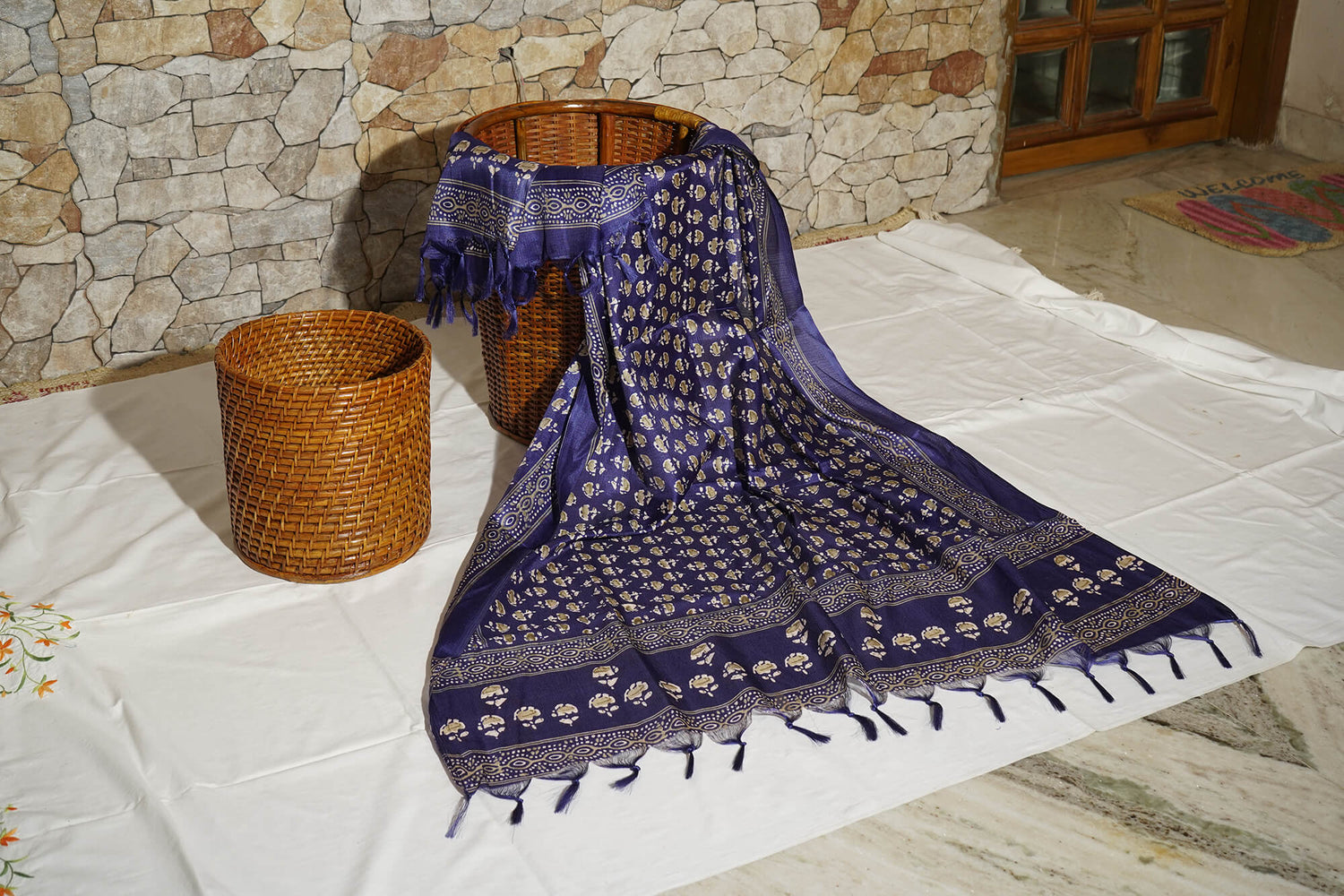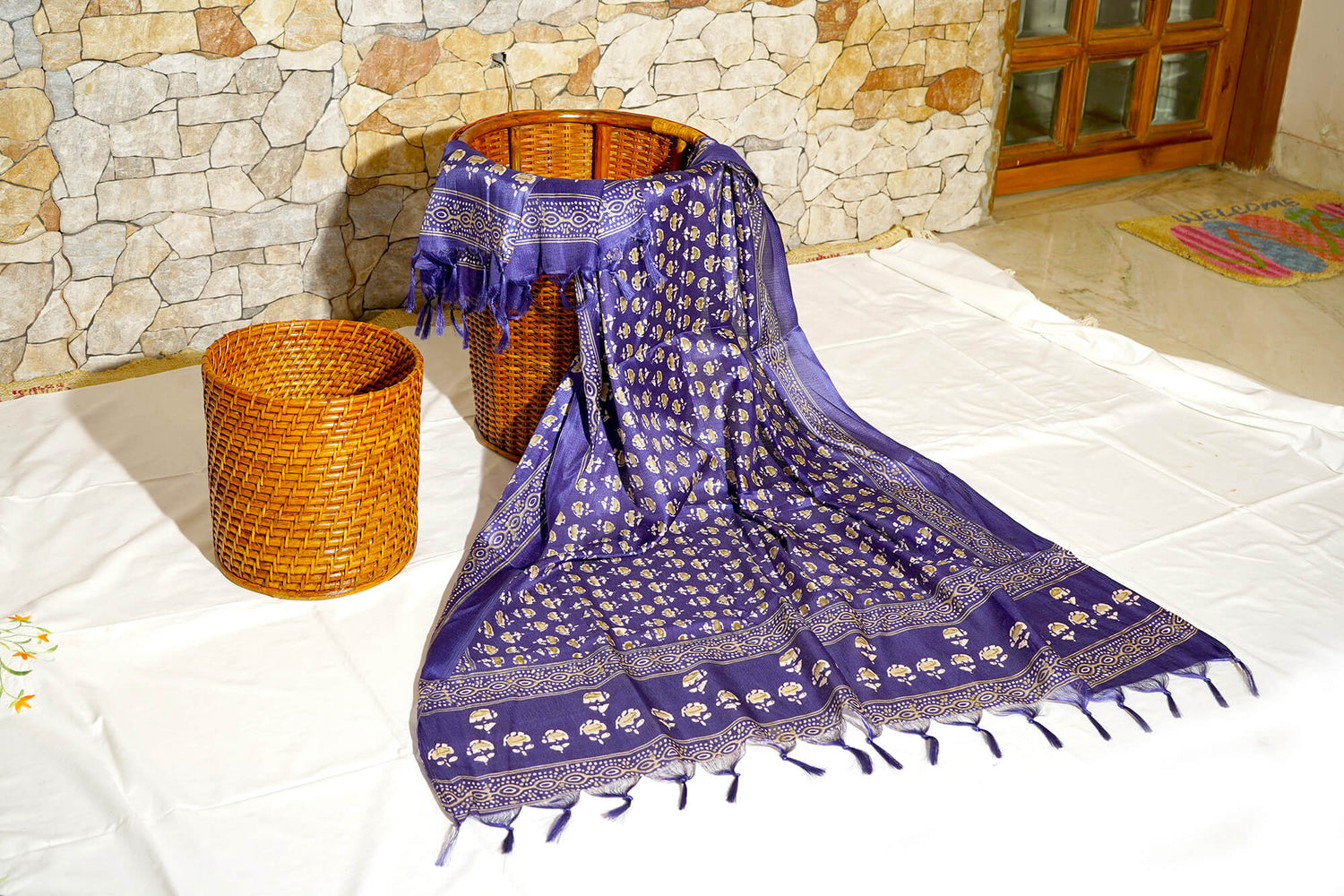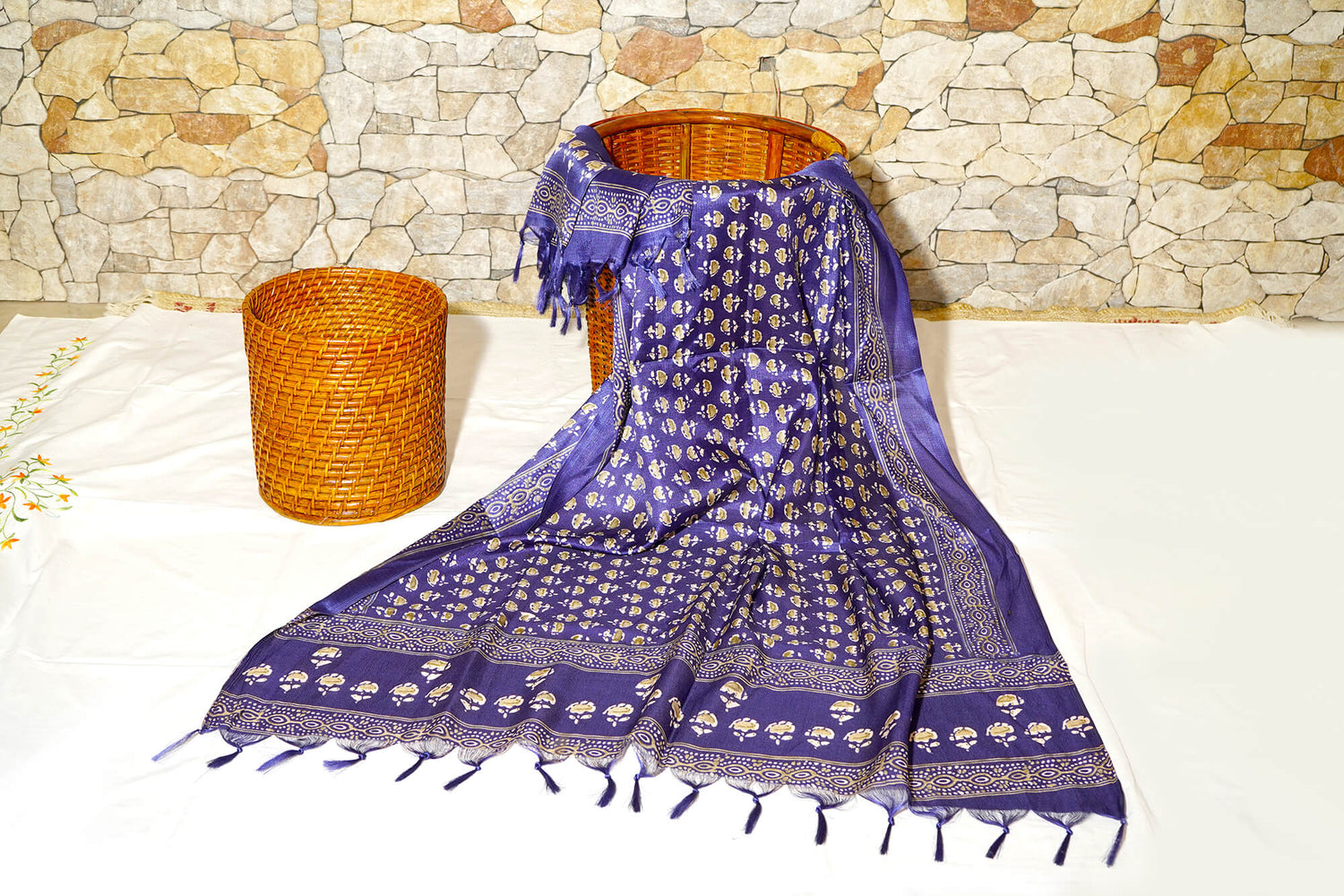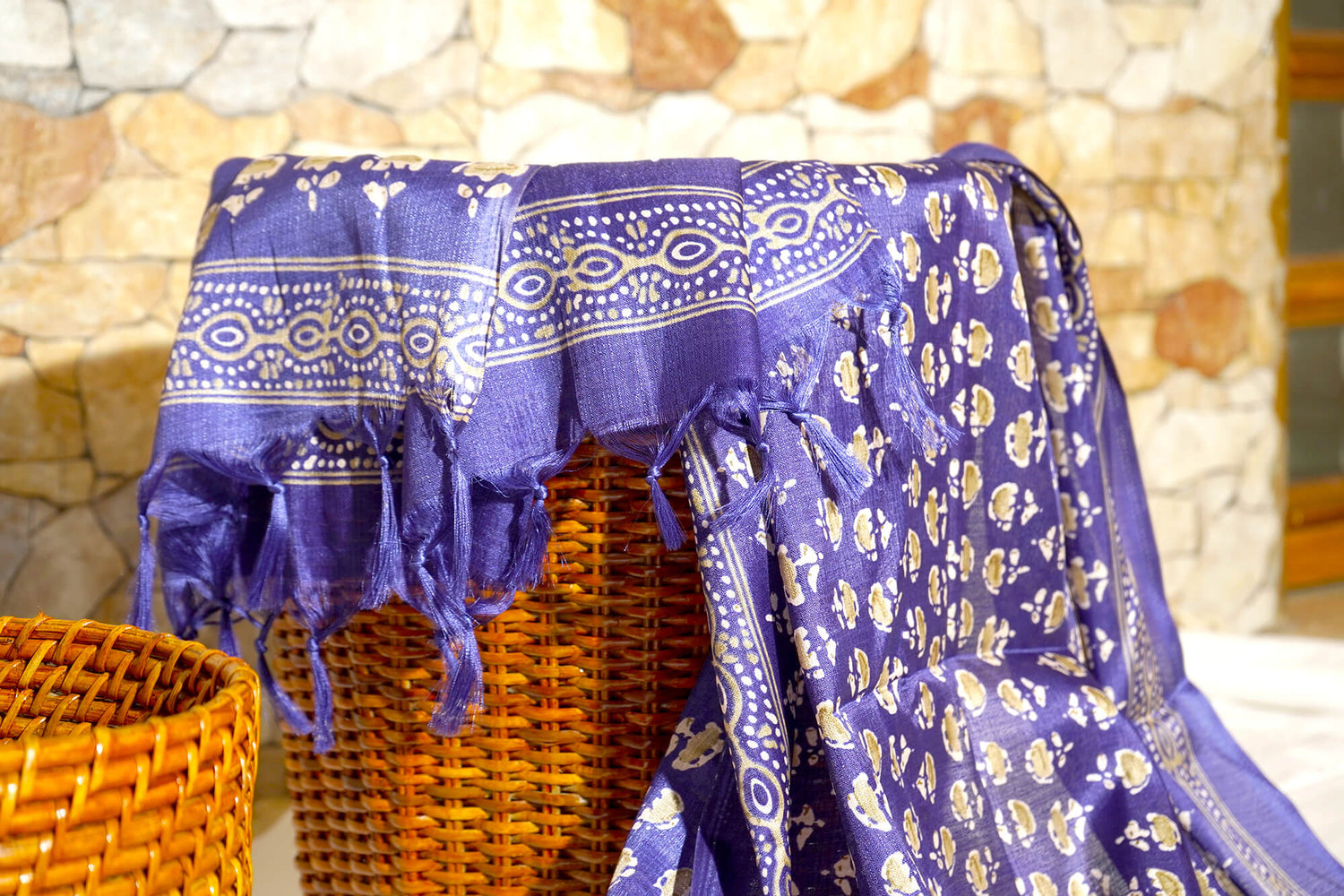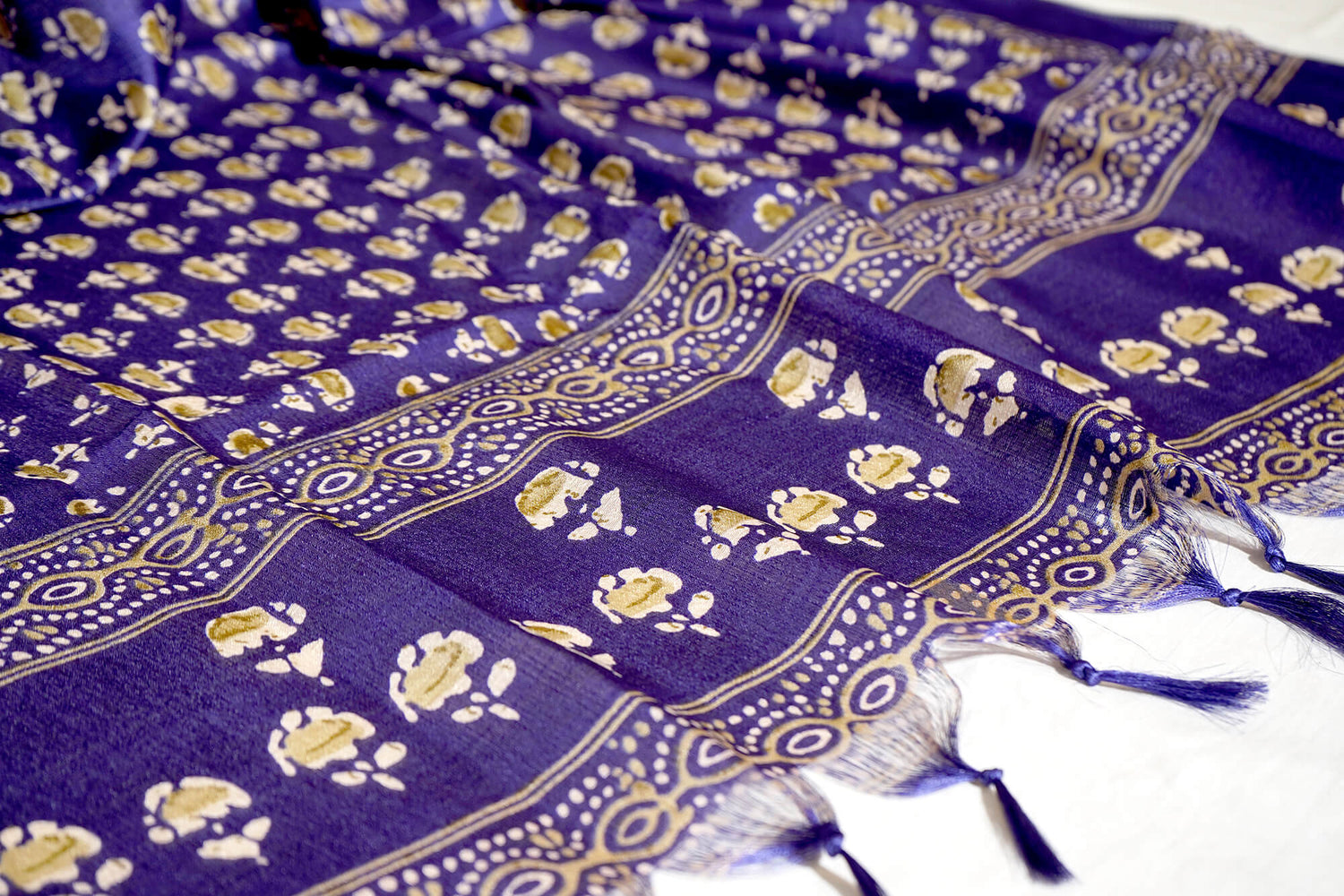Bagru Print Indigo Dupatta with Silver Border
- Regular price
-
Rs. 1,200.00 - Regular price
-
- Sale price
-
Rs. 1,200.00
Couldn't load pickup availability
At last a 400 year old craft that has been home to the Chippa community- a clan whose name comes from a Gujarati work meaning 'to print'. Just a few hours drive from the city of Jaipur- resides a village called 'Bagru'. The village welcomes you with a rhythmic beat of blocks and the air smells of drying fabrics. The painstakingly laborious but anciently beautiful process takes around 20 days for the fabric to be completed. The process includes washing - to get rid of the fabric impurities and then Harda is done which leaves a yellow tint. Think of it as a primer. Then the fabric is dried in the sun. Then once the colors are mixed - the printing is started. The printing involves three steps. First the outline is printed, then the block is done and then the insides. Once it is completed, the fabric is dried. The dried fabric is washed in water, then boiled with alizarine where red color acts as a fastener. The main distinguishing feature between Bagru & Sanganer is that Sanganer printing is done on a white background whereas Bagru is done on an indigo or dyed background. Local water also has its effects. In the water of Sanganer, the results of block printing are very rich shades of color while at Bagru one finds a reddish hue in the block printing textiles. Water was abundant Sanganer due to which dyeing and printing and washing could be done very easily. In contrast Bagru where water is scarce 'Dhabu' resist printing and indigo work is practised more often. Additionally motifs printed at Bagru are large with bold lines as compared to Sanganer where sombre colors and fine lines intricate detailing are practised Sanganeri motifs are based on nature whereas Bagru motifs are geometric.

